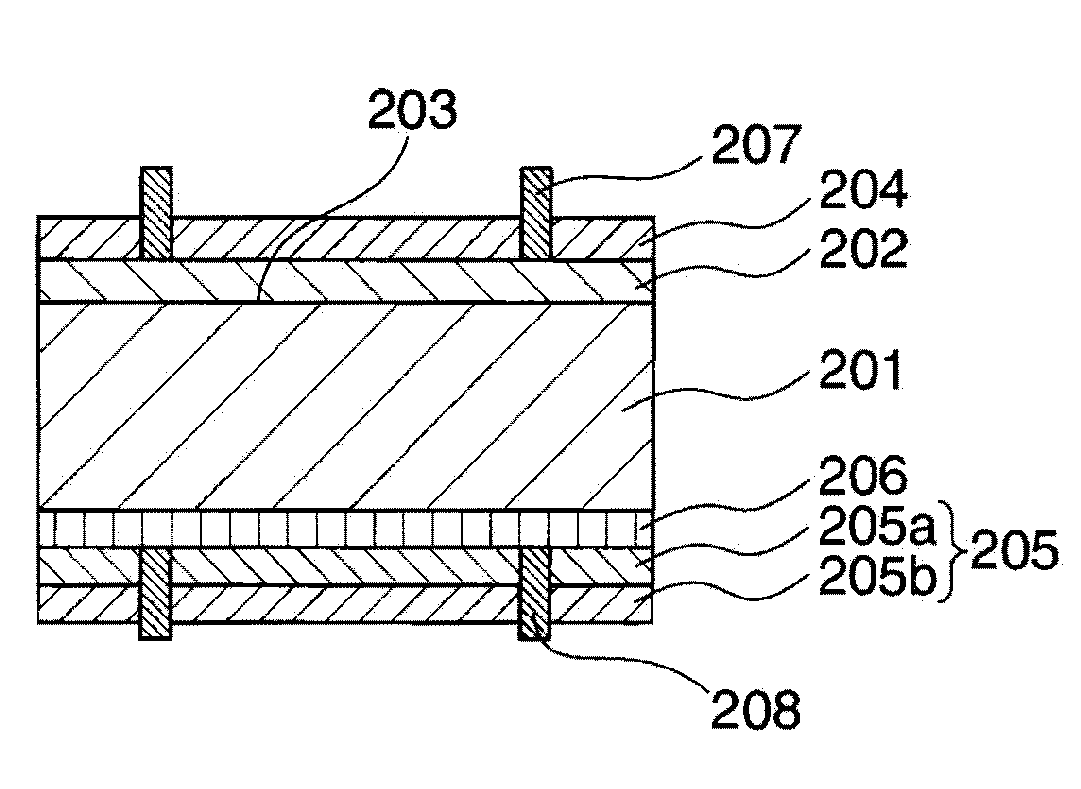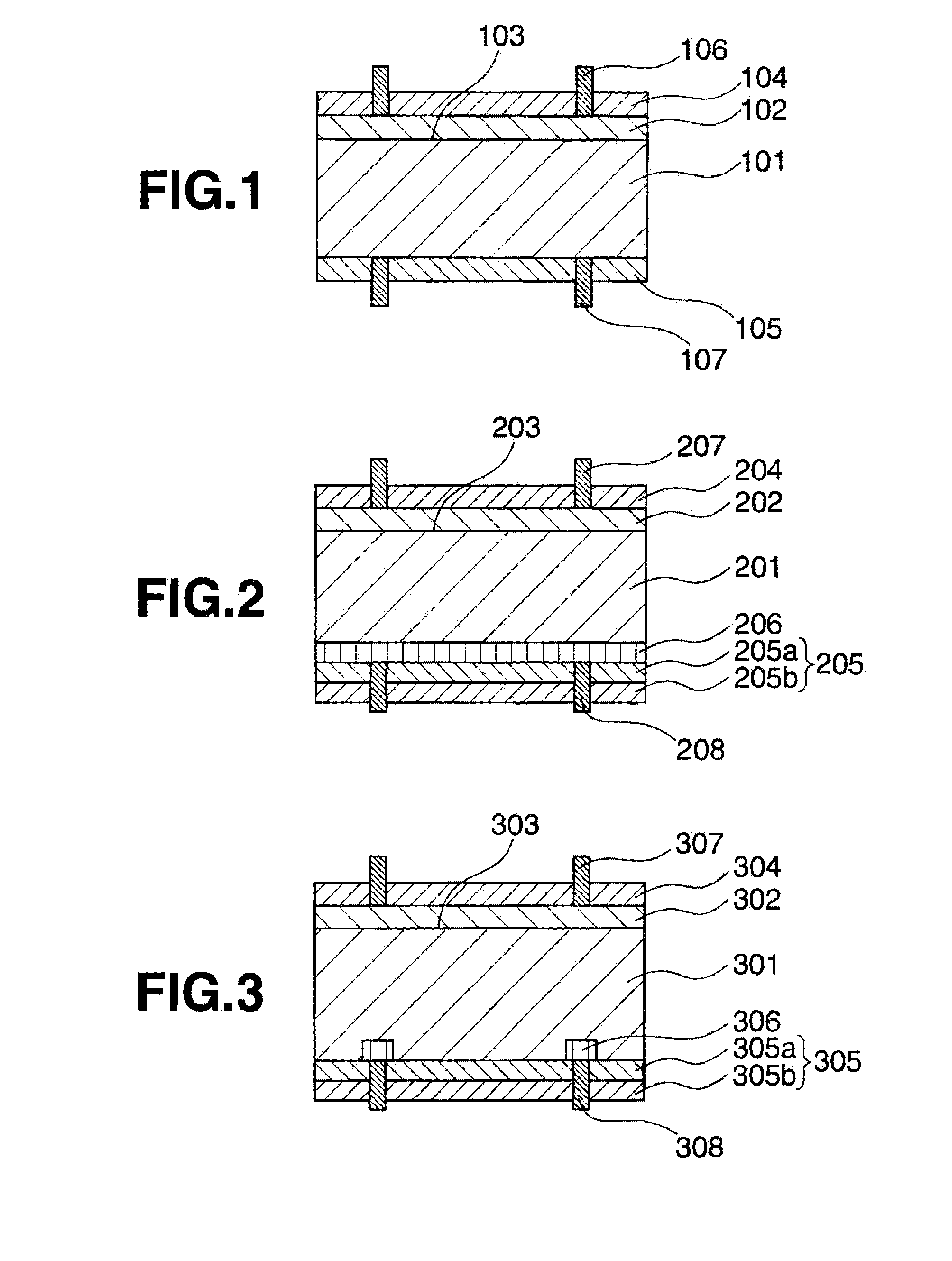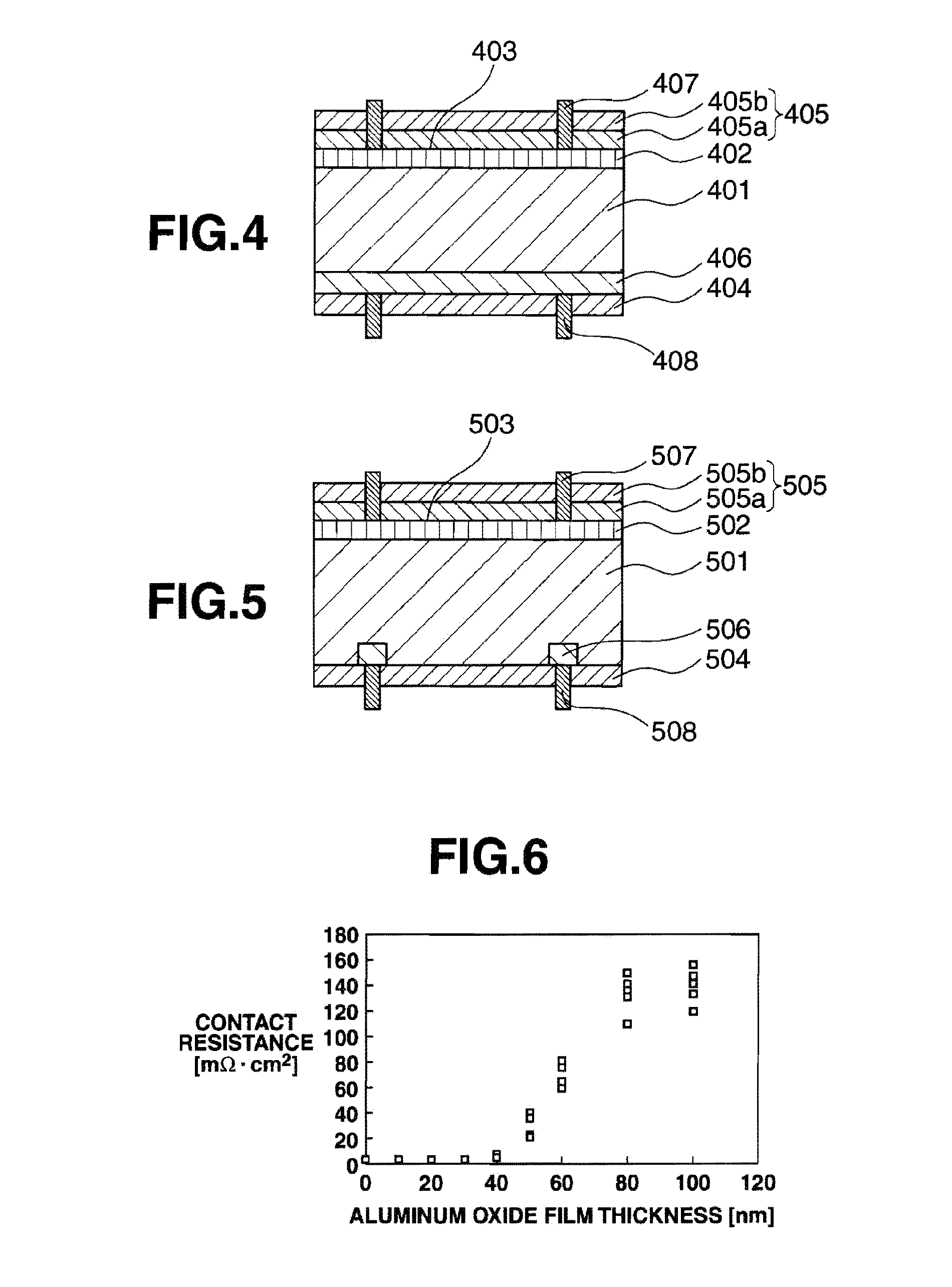Solar cell, method for manufacturing solar cell, and solar cell module
a technology for solar cells and solar cells, applied in the field of solar cells, method for manufacturing solar cells, and solar cell modules, can solve the problems of affecting the performance of solar cells, and affecting the performance of solar cells, and achieve the effect of cost reduction
- Summary
- Abstract
- Description
- Claims
- Application Information
AI Technical Summary
Benefits of technology
Problems solved by technology
Method used
Image
Examples
example
[0056]Experiments, Examples and Comparative Examples are given below for further illustrating the invention although the invention is not limited to the Examples.
experiment 1
Investigation of Electrode Contact Resistance
[0057]To investigate the thickness of an aluminum oxide film, first a conductive paste commonly used for the fire-through capability to silicon oxide film was used to examine its fire-through capability to aluminum oxide film. The fire-through capability can be evaluated in terms of contact resistance between the electrode and the silicon substrate.
[0058]Vapor phase diffusion of boron bromide was carried out on a textured p-type silicon wafer of 15 cm squares having a thickness of 240 μm, thereby diffusing boron therein to form a p+ layer. An aluminum oxide film was formed on the p+ layer by the ALD method, and a silicon oxide film was formed thereon by the plasma CVD method. The thickness of the silicon oxide film was adjusted such that the total thickness of aluminum oxide film and silicon oxide film was 100 nm. On these passivation films, a commercially available fire-through capability silver paste was printed in a comb-shaped pattern...
experiment 2
Investigation of Passivation Effect Upon Electrode Firing
[0061]Next, a test of measuring carrier life was carried out to examine the passivation effect versus thickness of aluminum oxide film.
[0062]On opposite surfaces of a p-type silicon wafer of 15 cm square having a thickness of 200 μm which had been mirror finished by acid etching, aluminum oxide films of varying thickness were formed by the ALD method. To impart the thermal hysteresis of electrode firing heat treatment, each sample was heat treated in a RTP furnace at a peak temperature of 800° C. for 3 seconds.
[0063]FIG. 7 diagrammatically illustrates the measurement results of effective carrier life before and after heat treatment. The effective carrier life is an overall carrier life including a carrier life in crystal bulk silicon and a carrier life at the silicon-aluminum oxide film interface, expressed in microsecond unit. In FIG. 7, the broken line with black squares designates the effective carrier life before heat trea...
PUM
 Login to View More
Login to View More Abstract
Description
Claims
Application Information
 Login to View More
Login to View More - R&D
- Intellectual Property
- Life Sciences
- Materials
- Tech Scout
- Unparalleled Data Quality
- Higher Quality Content
- 60% Fewer Hallucinations
Browse by: Latest US Patents, China's latest patents, Technical Efficacy Thesaurus, Application Domain, Technology Topic, Popular Technical Reports.
© 2025 PatSnap. All rights reserved.Legal|Privacy policy|Modern Slavery Act Transparency Statement|Sitemap|About US| Contact US: help@patsnap.com



